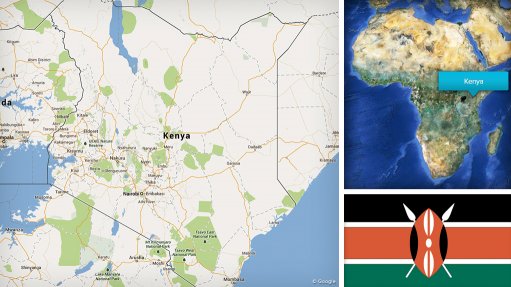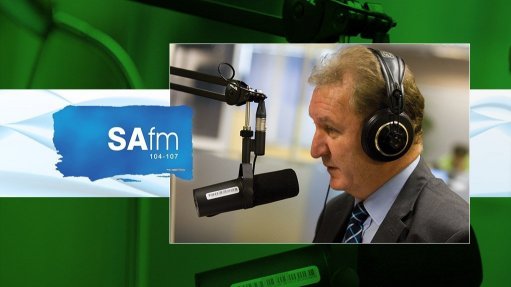Global steel industry body expects 2.3% contraction in demand this year
Global industry organisation the World Steel Association (worldsteel) forecasts that steel demand will contract by 2.3% this year to reach 1.80-billion tonnes.
It adds that steel demand will, however, recover in 2023, growing by 1% to 1.81-billion tonnes.
In an update of its Short Range Outlook (SRO) for 2022, worldsteel says the current forecast represents a downward revision over the earlier forecast, reflecting the repercussion of persistently high inflation and rising interest rates globally.
High inflation, monetary tightening and China’s slowdown contributed to a difficult 2022, but infrastructure demand is expected to lift 2023 steel demand slightly, the organisation says.
“The global economy is affected by persisting inflation, US monetary tightening, China’s economic deceleration, and the consequences of Russia’s invasion of Ukraine. High energy prices, rising interest rates, and falling confidence have led to a slowing in steel using sectors’ activities. As a result, our current forecast for global steel demand growth has been revised down compared to the previous one,” comments worldsteel Economics Committee chairperson and Ternium CEO Máximo Vedoya.
“The prospect for 2023 depends on the impact of tightening monetary policies and central banks’ ability to anchor inflation expectations. Particularly, the [European Union] outlook is subject to further downside risk due to the high inflation and the energy crisis that has been exacerbated by the Russia-Ukraine war,” he notes.
The global economic environment has deteriorated significantly in 2022 as inflation risk fully materialised along with other major headwinds, namely the Russia-Ukraine war and China’s lockdowns.
The Russia-Ukraine war exacerbated the inflationary pressure that was ignited by the post-lockdown supply and demand imbalances as the war disrupted energy and food supplies and intervened with the normalisation of supply chains. In particular in Europe, where dependence on Russian gas supply is high, economic activities, as well as confidence, are heavily affected by the energy crisis, worldsteel says.
Further, the US Federal Reserve's aggressive interest rate hikes and strong dollar are propelling recession risks in the US and will have a ripple effect for the rest of the world through capital outflows in the emerging economies, increasing the financial stress of indebted countries and consumers.
Rising interest rates and high inflation will affect investment and consumer spending, and will hurt steel-intensive sectors, such as construction, machinery and consumer durables, the steel organisation notes.
Meanwhile, supply chain problems eased somewhat this year, but continued to constrain production activities as new disruptions have emerged. Assuming that the war will not end soon, and that China continues to maintain its strict Covid-19 containment policy for the time being, supply bottlenecks will not dissipate completely, despite slowing demand, worldsteel says.
Uncertainty remains elevated for the global economy and the balance of risks is largely skewed to the downside. Among these risks are the effect of monetary tightening, continuation of inflation, the direction of the Chinese economy and its Covid-19 policy, the potential crisis of gas supply in Europe, and the aggravation of the Russia-Ukraine war with unexpected consequences.
CONSTRUCTION
The post lockdown recovery in construction activity was hindered first by supply bottlenecks and then surging materials costs. Global construction activity is facing further challenges in the coming years as interest rates start to rise across many regions for the first time since the global financial crisis. The residential construction outlook has deteriorated considerably owing to rising funding costs, lowered purchasing power, and weak confidence.
However, despite the headwinds, infrastructure remains a bright spot in many regions, as governments are focusing on infrastructure projects, worldsteel says.
In China, the property market remains depressed, and a strong rebound is not expected owing to low buyers’ confidence. With some relaxation measures in the real estate market expected, a slight improvement in 2023 is likely.
Infrastructure investment could gain more positive momentum as the Chinese government is relying on infrastructure investment to support the weak economy, the steel association notes.
Further, in the US, the new Infrastructure Law is expected to boost investment in infrastructure sharply despite the deteriorating overall economic environment. The boom in residential construction is fading amid high construction costs, rising mortgage rates and elevated home prices.
However, sharply rising interest rates will delay the recovery of the non-residential sector.
In the EU, meanwhile, construction activities are generally weakening amid high material costs, a shortage of materials, rising interest rates, and falling confidence. Italy has seen strong construction growth in 2022 on the back of government incentives, but the future outlook is uncertain.
In Japan, civil engineering projects associated with natural disaster prevention programmes will support construction steel demand. In India, a strong push for infrastructure, including roads and metro projects, will continue to drive steel demand. Urban infrastructure development will also drive the residential sector’s recovery, worldsteel states.
Across the Association of Southeast Asian Nations region, governments are focusing on resuming delayed or halted infrastructure projects. However, tightening monetary policy and rising costs may undermine growth in residential construction in the region.
Mexico is facing a very weak recovery in construction. The sector is not expected to reach pre-pandemic levels in 2023.
In Brazil, the construction sector is also slowing down after a strong performance in the first half of this year.
In the Gulf Cooperation Council countries, budget-buffering efforts are delaying new projects in the short term, but high oil prices will lead to more construction activities in the near future, worldsteel notes.
AUTOMOTIVE
The global automotive industry’s recovery continued during the first half of this year amid the headwinds largely related to Covid-19 restrictions in China and lingering supply chain disruptions.
In South Korea, automotive production is expected to show growth as the lockdowns in China and supply chain disruptions are somewhat alleviated.
In the US, light vehicle production is poised for continued upward movement provided supply bottlenecks continue to ease, even as the broader manufacturing sector slows sharply.
In Mexico, after a weak performance in 2021, automotive production is expected to show strong growth this year and in 2023 on the back of the gradual alleviation of the shortages of semiconductors. In India, the momentum for passenger car production is strong and is expected to remain healthy with strong order books and improving microchip supply, the global body says.
Meanwhile, in Germany and Japan, the recovery is taking place at a slower pace, with more visible improvement expected in 2023.
In Russia, passenger car production plunged with weak demand and increasingly severe shortage of components.
Meanwhile, supply chain disruptions are getting less acute, and it is expected that the situation will show further improvement in 2023. However, rising inflation and especially rising energy prices are squeezing household budgets, while rising interest rates make cars less affordable.
Potential weakness on the demand side may weaken the recovery of production. However, the production and sales of electric vehicles have been gaining momentum, especially in China and Europe.
In China, production of electric vehicles jumped by 120% to 3.28-million units, accounting for 22.5% of total vehicle production in the first seven months of this year, the association states.
Comments
Press Office
Announcements
What's On
Subscribe to improve your user experience...
Option 1 (equivalent of R125 a month):
Receive a weekly copy of Creamer Media's Engineering News & Mining Weekly magazine
(print copy for those in South Africa and e-magazine for those outside of South Africa)
Receive daily email newsletters
Access to full search results
Access archive of magazine back copies
Access to Projects in Progress
Access to ONE Research Report of your choice in PDF format
Option 2 (equivalent of R375 a month):
All benefits from Option 1
PLUS
Access to Creamer Media's Research Channel Africa for ALL Research Reports, in PDF format, on various industrial and mining sectors
including Electricity; Water; Energy Transition; Hydrogen; Roads, Rail and Ports; Coal; Gold; Platinum; Battery Metals; etc.
Already a subscriber?
Forgotten your password?
Receive weekly copy of Creamer Media's Engineering News & Mining Weekly magazine (print copy for those in South Africa and e-magazine for those outside of South Africa)
➕
Recieve daily email newsletters
➕
Access to full search results
➕
Access archive of magazine back copies
➕
Access to Projects in Progress
➕
Access to ONE Research Report of your choice in PDF format
RESEARCH CHANNEL AFRICA
R4500 (equivalent of R375 a month)
SUBSCRIBEAll benefits from Option 1
➕
Access to Creamer Media's Research Channel Africa for ALL Research Reports on various industrial and mining sectors, in PDF format, including on:
Electricity
➕
Water
➕
Energy Transition
➕
Hydrogen
➕
Roads, Rail and Ports
➕
Coal
➕
Gold
➕
Platinum
➕
Battery Metals
➕
etc.
Receive all benefits from Option 1 or Option 2 delivered to numerous people at your company
➕
Multiple User names and Passwords for simultaneous log-ins
➕
Intranet integration access to all in your organisation

















